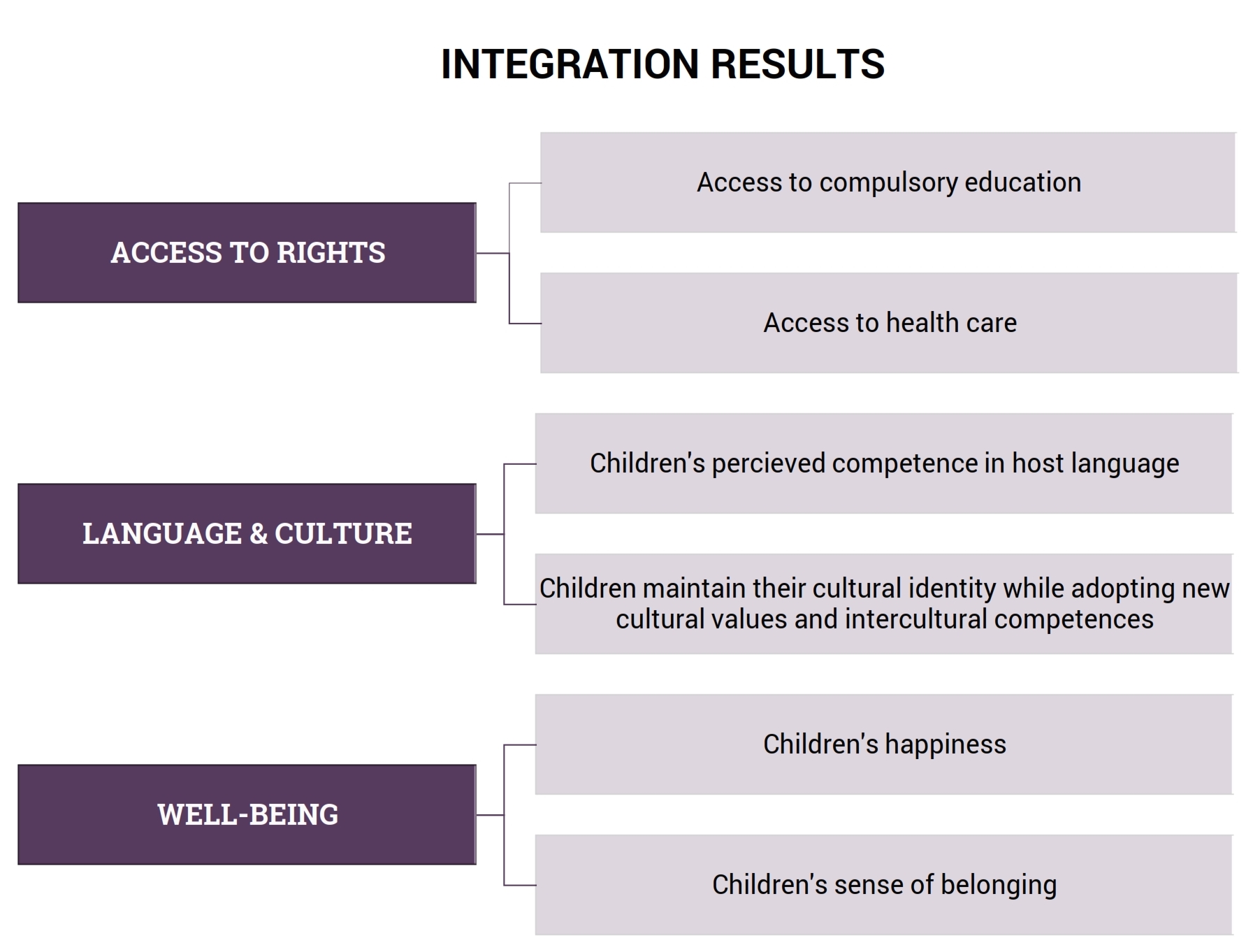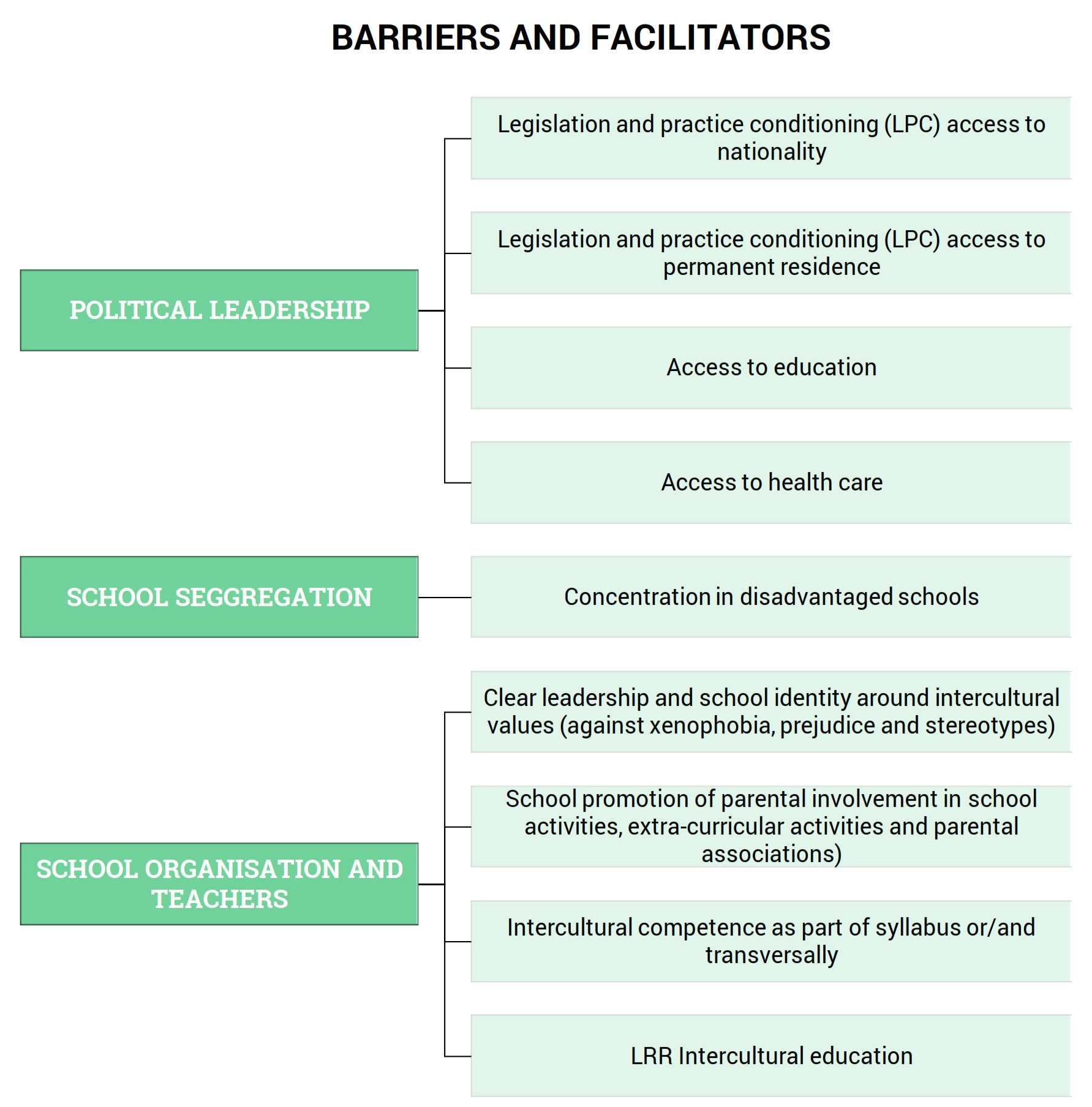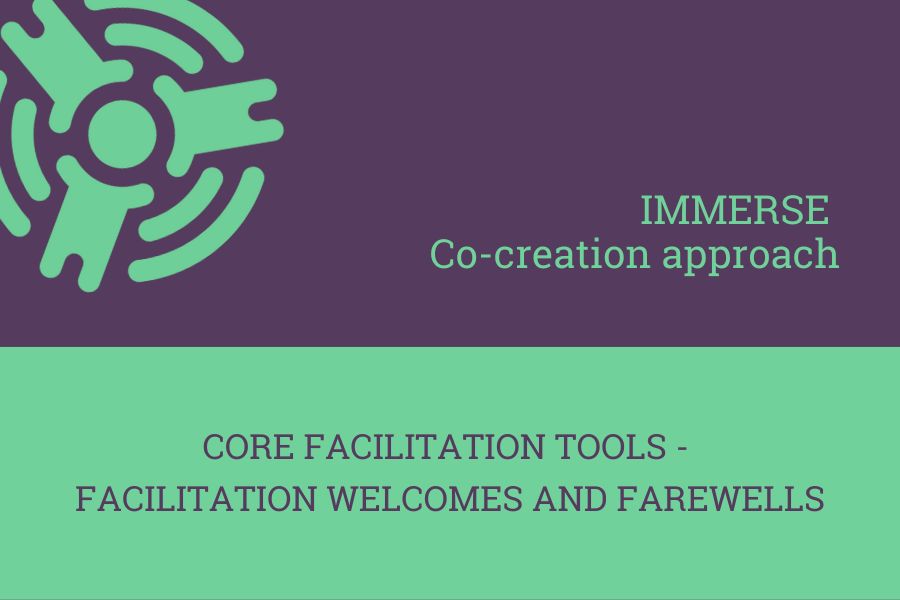Selection and creation of dashboard of socio-educational integration indicators
The Dashboard of Indicators has been developed using a co-creation method which includes the voices of migrant and refugee children, their families and those who work directly with them in schools, NGOs, and policy makers. In this way, we lean on their direct experience to depict a more meaningful definition of integration.
The aim of this tool is to unify criteria in the collection of data when studying the factors that contribute to and determine the socio-educational integration of these children in their host societies in Europe. The synthesis of 30 indicators includes fundamental aspects of three levels of integration, namely micro (children and their families), meso (educational centres, educative community and neighbourhoods) and macro (society and institutions) levels.
The final dashboard has a total of 30 indicators: 14 for integration results and 16 for barriers and facilitators of integration results at the meso and macro levels.
The integration results are divided into 5 dimensions: 1) access to rights, 2) language and culture, 3) well-being, 4) connectedness and 5) educational achievements.


The barriers and facilitators are related to: 1) political leadership, 2) school segregation, 3) learning support, 4) mental health services, 5) negative attitudes, 6) school organisation and teachers.


(LPC: Legislation and practice conditioning…)
(LRR: Legislation, recommendations and resources devoted to…)
Empirical measures have been defined for all 30 indicators, which have been content validated by experts in the fields of migration, education and integration, and also ecologically validated by children, educators, public authorities and policy-makers at the local, regional and national levels. Next, the necessary data has been collected from over 24,000 children, and teachers and principals in over 400 schools and educational environments in the six IMMERSE European countries (Belgium, Germany, Greece, Ireland, Italy and Spain) or retrieved from well-known sources such as MIPEX, PISA, PIAAC and Eurydice.
The results for the 30 indicators are available in the “Community” section of the website under “Dashboard of socio-educational integration indicators“. This tool displays the indicators through an interactive interface that enables the users to see how the combinations of different characteristics of migrant and refugee children and their contexts change the performance in each indicator score.



